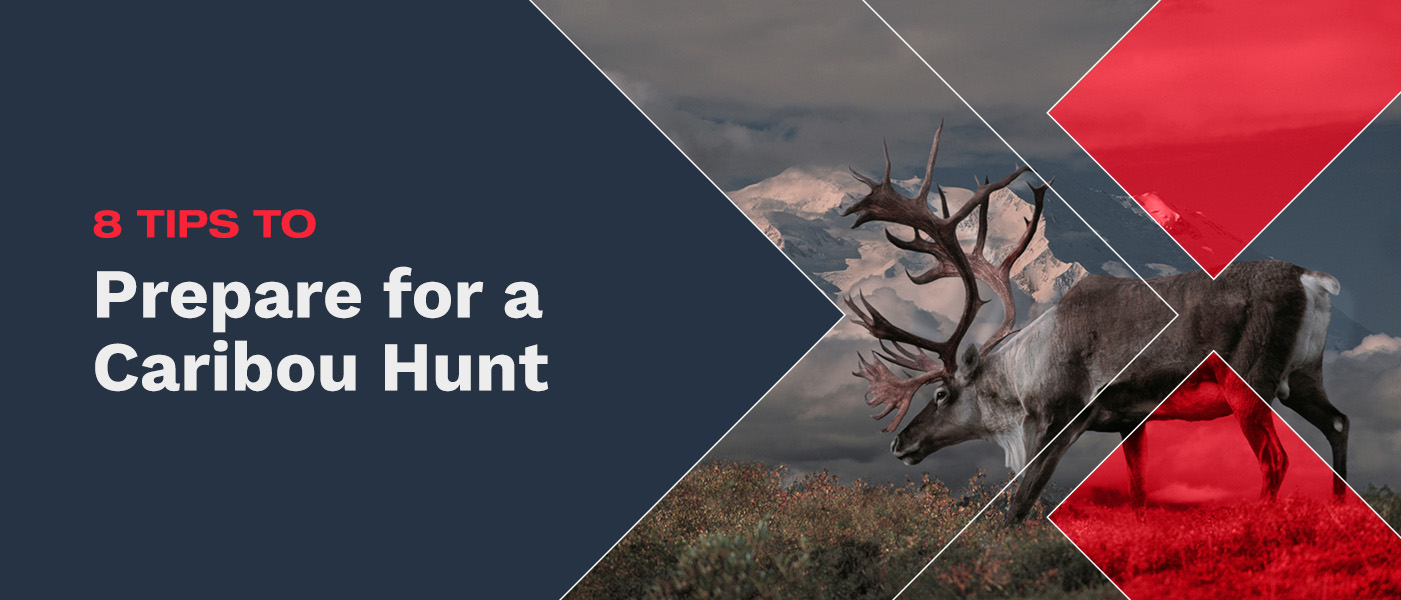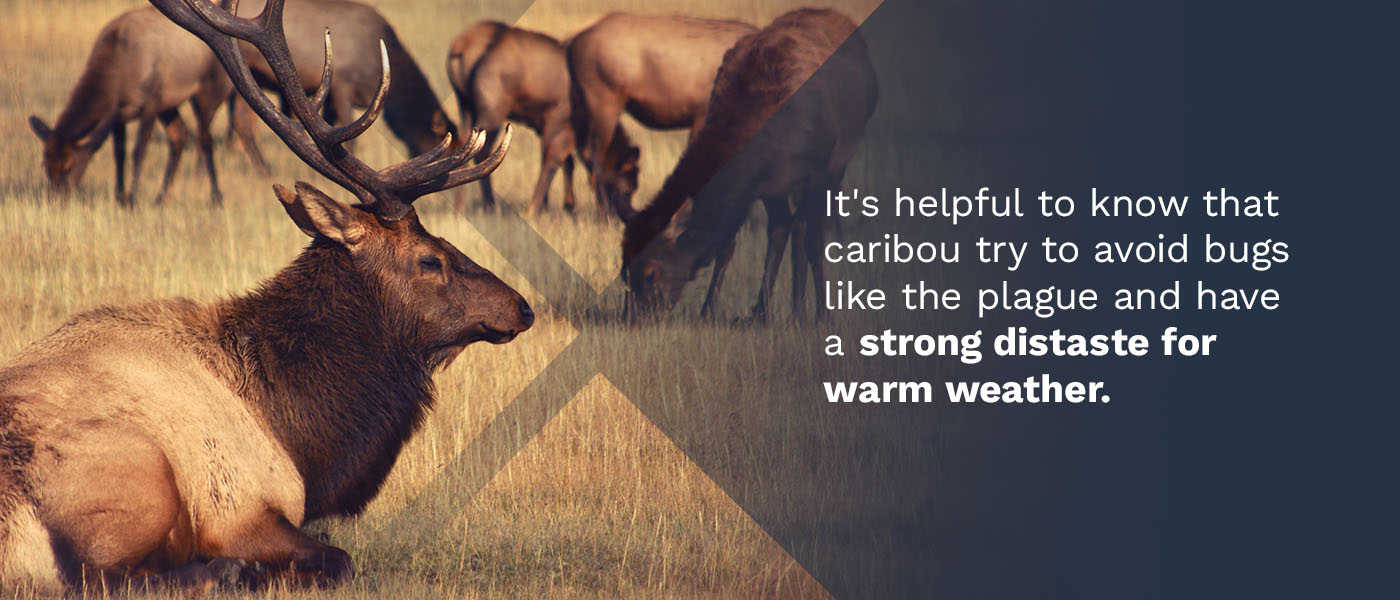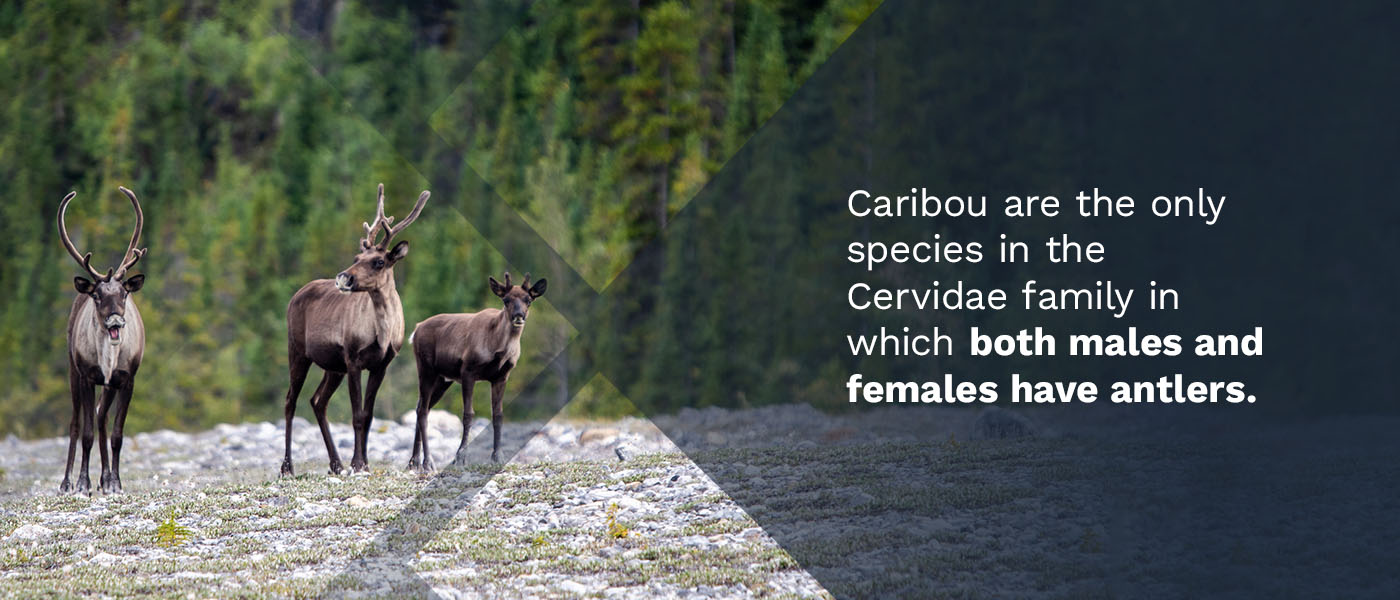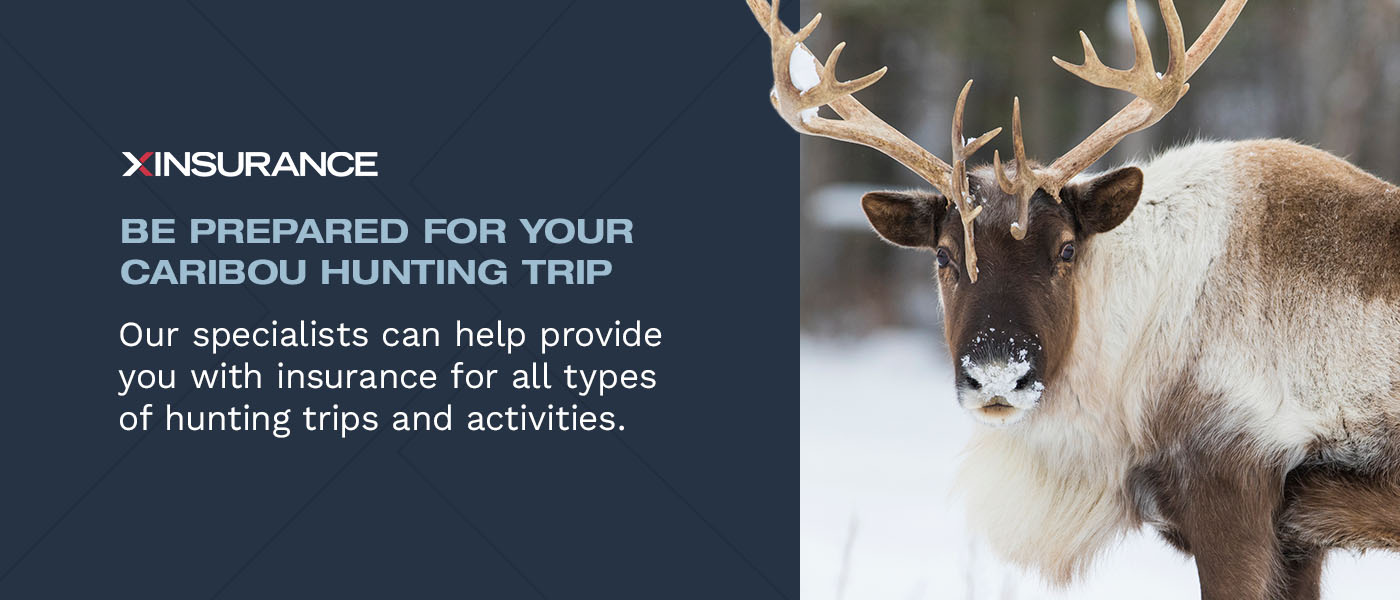
8 Tips to Prepare for a Caribou Hunt
If you’re looking to experience the wilderness in a way most Americans never will, caribou hunting is the right trip for you. As you trek some of North America’s northern-most tundra, you’ll understand why many hunters love the pursuit of caribou. This won’t be like your average hunt, though, so be sure to take the necessary time and actions to prepare. From securing the right gear and equipment to determining a caribou’s sex, a lot of preparation should go into planning your caribou hunt.
Whether you’re caribou hunting for the first time or returning for another hunt, consider these caribou hunting tips to help you prepare.
1. Know How to Handle the Landscape
Caribou are native to parts of Alaska and Canada, so hunters may be challenged with the new landscape. You’ll encounter Arctic and sub-Arctic landscapes and environments, and it’s easy to get overwhelmed or uncomfortable in these settings, especially if it’s your first caribou hunt. Caribou season occurs during late summer, though don’t be fooled — the temperatures will still be cold. Freezing temperatures, heavy rain and snow, high winds, and dense fog are all to be expected in the Alaskan tundra.
The best way to prepare for and handle the Alaskan landscape and all it throws at you is to bring proper gear. You’ll need a sturdy tent to withstand the wind and weather and a sleeping bag that will keep you warm even if it’s a bit damp. It’s best to assume all your gear will get wet, so bring high-quality waterproof and water-resistant gear and clothing. For this reason, consider using cots to keep things off the ground in case the tent floor gets wet.
It’s common for tundra fog to be thick, making it easy to get turned around and become lost. Additionally, bush pilots can be delayed because of the fog, so if you get lost, you may end up stranded for a couple of days until the fog clears and they can get to you. To prepare for this, bring a GPS unit so you can always find your way back to camp. Also, consider bringing a satellite phone — cellphone reception is unlikely — to contact someone if an emergency occurs.
2. Know Where to Look for a Herd
Caribou are the most well-traveled North American game species. While they travel more often and farther than other species, they often do so in predictable ways. This characteristic makes them quite easy to find when glassing with your binoculars — as long as you know their habits and where to look for them. For example, it’s helpful to know that caribou try to avoid bugs like the plague and have a strong distaste for warm weather.
If the weather is particularly warm during your hunt, find a good vantage point to glass from and look for caribou camping out in ice patches and around glaciers in the mountains. Caribou can often be found lying directly in the snow or on the ice, and they’ll stay there until the air starts to cool off, sometimes staying in the same spot for hours.
Caribou do their best to avoid those pesky biting insects. This often leads them to places where there will be a nice breeze, like at the bottom of glaciers or near lakes. In these spots, the breeze keeps the insects off them enough for the caribou to be comfortable. When there’s a steady breeze blowing across the entire tundra, caribou can be found feeding in low land and around the edges of ponds. Once the breeze dies, the herd will be quick to seek a spot with fewer bugs.
As for traveling herds, if you notice a herd of caribou traveling far off, remember the route they used. Caribou herds tend to follow the same routes as herds that previously moved through an area. Make note of where the herds come into vision. If they’re consistently traveling one path, you might consider moving closer to that area. If their routes seem less particular, consider positioning yourself near places where the landscape would naturally funnel the herds into a valley bottom.
For example, consider locations where rivers can be crossed, isthmuses between bodies of water like lakes, and low points between two peaks of a high ridge. Spots like these are common paths for caribou to take whether they’re following other herds or not.
Despite being capable of traveling great distances, caribou might stay in one area for several days if there’s enough food and good conditions. If you watch a bull feeding in one spot for at least an hour, consider attempting to hike closer. Even if it’s a few miles away, there’s a chance the bull will still be there when you get close, and if not, you may encounter a new herd along the way.
3. Focus on Caribou Moving Toward You
Your energy and focus will be best spent on the caribou that are moving toward you. Caribou can move quite effortlessly and very quickly across the tundra. You’ll find this will be quite the opposite for you. Tussocks are landscape features that will slow you down, and if not traversed carefully, they can easily cause twisted ankles. Caribou that are moving away from you will be no match for you, and it’s highly unlikely you’ll catch up to them before they disappear over another ridge or two.
Instead, concentrate on getting in front of a herd so they’re moving toward you. Once you’re out in front, often all it takes is to get low in the brush and wait for the caribou to come within range. This is where positioning yourself along their traveling routes and in likely places for them to pass through is beneficial. Doing so allows you to anticipate which direction they’ll likely be coming from so you can get in front of the herd.
Remember, you’re much more likely to take a caribou walking toward you than one that’s traveling away from you.
4. Be Cautious When Stalking Them
While caribou generally aren’t as easily spooked as other wild game, it’s important to still be cautious when stalking them. Instead of rushing, be intentional and mindful of your movements while stalking. Caribou are naturally curious animals, and when they notice your strange shape on the tundra, they’ll often go out of their way or double back to check it out.
When stalking, it’s best to stay low to the ground, especially as you get closer to the herd. While some caribou may let you get close while crawling across the open tundra, others may take off at the sight of your head popping up several hundred yards away. Once you’re in a good position, there aren’t many precautions you need to take aside from staying low in the vegetation.
However, you’ll be unable to stay completely concealed at all times, and that’s okay. Use this and the caribou’s curiosity to your advantage. Exposing yourself to a feeding bull could entice him to close the distance between you out of curiosity. Of course, you won’t want to just stand up and give yourself away, though getting on your hands and knees can be the perfect amount of exposure to draw in a nosy caribou.
You should also keep in mind that your approach can be quick, especially if you notice the herd isn’t spooking easily. While you may be able to stay more concealed when moving slow, you risk the herd moving past you before you’re in a good shooting position.
5. Know Where to Aim
Caribou are a fairly easy species of game to take down, especially if you know where to shoot. The best shot to aim for is a lung shot, which will be around 5 to 6 inches behind the front shoulder. Aiming behind the shoulder helps preserve the good meat and will likely puncture a lung. With a punctured lung, the caribou will be unable to run far, and tracking will be fairly easy on the open tundra. If you hit vital organs like the lungs, the bull will fall quickly.
Knowing where to aim is essential for quickly taking down and finding the caribou. Without the right knowledge, you could easily make a bad shot and miss entirely or wound the caribou. Making a non-fatal shot is one of the worst situations a hunter can find themself in. A bad shot can injure the animal instead of dropping it, which means the caribou will run off with potential damage and pain for the rest of its life.
A bad shot could also kill the animal long after it runs off, meaning you’ll never be able to track and recover it. This situation is far from ideal and is gut-wrenching for many hunters. Know where to aim, and only take a shot if you’re confident it’s a good one.
6. Confirm the Sex Before Shooting
In addition to being confident in your shot, you need to confirm the sex of the caribou before shooting at it. Caribou are the only species in the Cervidae family in which both males and females have antlers. With other species, males are easily distinguishable because females lack antlers. However, when hunting caribou, you’ll have to look more closely for sexual indicators because mature females and young males have similar antlers, and it can be difficult to distinguish between the two.
Keep these reliable sexual indicators in mind to help you determine whether you’re shooting a cow or bull:
- Urination direction: Cows urinate behind their back legs while bulls urinate forward.
- Rump patch: Bulls have a narrow rump patch compared to the wide, white rump patch of cows.
- External genitals: Males have external testicles and a penis shaft. Females have a vulva that’s commonly surrounded by a dark patch.
- Body size: Mature bulls can be up to twice the size of mature cows. Young bulls may be similar in size to the cows, so be sure to confirm the sex using other indicators as well.
Determining the sex of the caribou is important because some areas restrict harvesting cows to preserve the caribou population. Cows can produce more calves to keep growing the herd, so it’s often best to shoot bulls unless otherwise indicated. It’s important to check regulations in the area you’ll be hunting so you know what you’re allowed to shoot. In most cases, err on the side of caution and seek out bulls.
7. Know How to Handle Meat
After you successfully shoot and recover your caribou, you’ll have to carry it back to camp. Keep this in mind when stalking herds and picking out a bull. If you’re hunting alone, be prepared for several trips back and forth to pack out all the meat. Be sure to check the area’s hunting regulations to ensure you’re taking all the meat possible. Additionally, it may be several days until you’re scheduled to be picked up, so you’ll need to preserve the meat as best as possible until then.
Keep the meat off the ground and covered so it stays cool and dry. Most importantly, you’ll need to do your best to prevent bears and bugs from getting to the meat. Pack your meat in meat bags and spray them with citric acid to keep bugs away. As for bears, Alaska is full of them. While most of them will want nothing to do with you, you need to be prepared for dealing with them.
Many hunters either use bear spray or a firearm to protect themselves and their meat from wandering bears. Keeping your camp clean and storing the meat downwind of your area can also help keep bears out of your space.
8. Get Hunting Trip Insurance
With any hunting trip, there is always a certain level of risk involved. While most hunters value safety and take every precaution in the book, accidents and injuries can still happen. Caribou hunting insurance protects hunters who are involved in an accident that causes property damage or injury to themselves or others. In these situations, liability cases can be extremely damaging to a person’s finances and personal assets. When a hunting accident occurs, hunting liability insurance helps protect you from costly lawsuits.
Consider investing in hunting insurance before leaving for your caribou hunting trip. Knowing you’re protected in case anything happens gives you peace of mind and helps relieve any unwanted stress during your big trip.
Be Prepared for Your Caribou Hunting Trip
While hunting insurance may seem like another added cost you can go without since you’re already spending money on a big hunt, it’s something you’ll wish you had when you find yourself in an unexpected accident. It’s nearly impossible to prepare for everything, though you can prepare for caribou hunting safety with hunting liability insurance from XINSURANCE. Our specialists can help provide you with insurance for all types of hunting trips and activities.
You should be able to enjoy hunting without overthinking every move you make. Before scheduling your caribou hunt, get in touch with us to find out what kind of coverage we can offer you.

Rick J. Lindsey hails from Salt Lake City, Utah. He began working in the mailroom of his father’s Salt Lake City insurance firm, getting his introduction to the business that became his lifelong career. Rick J. Lindsey quickly rose through the ranks while working in nearly every imaginable insurance industry job. As an entrepreneur, specialty lines underwriter, claims specialist, risk manager, and a licensed surplus lines broker, Rick J. Lindsey is highly skilled in all levels of leadership and execution. As he progressed on his career path, Rick J. Lindsey discovered an urgent need for insurers willing to write policies for high-risk individuals and businesses. He was frequently frustrated that he could not provide the liability protection these entities desperately needed to safeguard their assets. He also formed the belief that insurance companies acted too quickly to settle frivolous claims. Rick J. Lindsey decided to try a different approach. He started an insurance company and became the newly formed entity’s CEO. This opportunity has enabled Rick J. Lindsey to fill a void in the market and provide a valuable service to businesses, individuals, and insurance agents who write high-risk business. XINSURANCE also specializes in helping individuals and businesses who live a lifestyle or participate in activities that make them difficult for traditional carriers to insure. If you’ve been denied, non-renewed, or canceled coverage, don’t give up quite yet. Chances are XINSURANCE can help.




